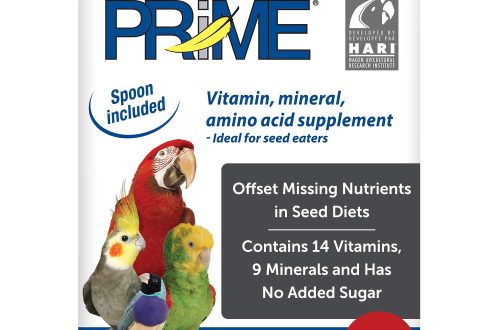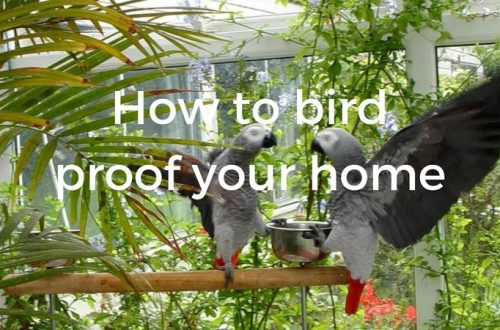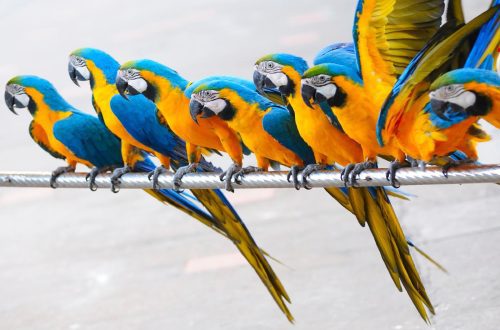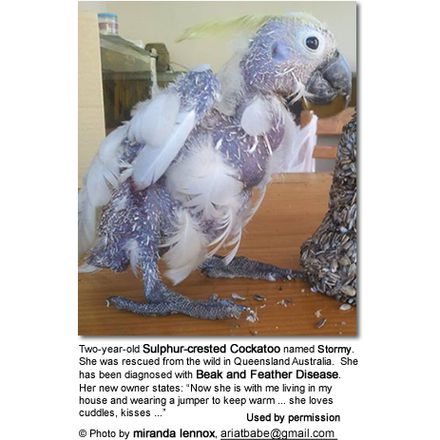
Parrot Pinch Syndrome
Parrot Plucking Syndrome, or scientifically trichopilomania, is a very complex bird disease that requires a long study of the causes and subsequent treatment.
Parrots are by nature very clean birds, which put their plumage in order several times a day, and many species need daily bathing.
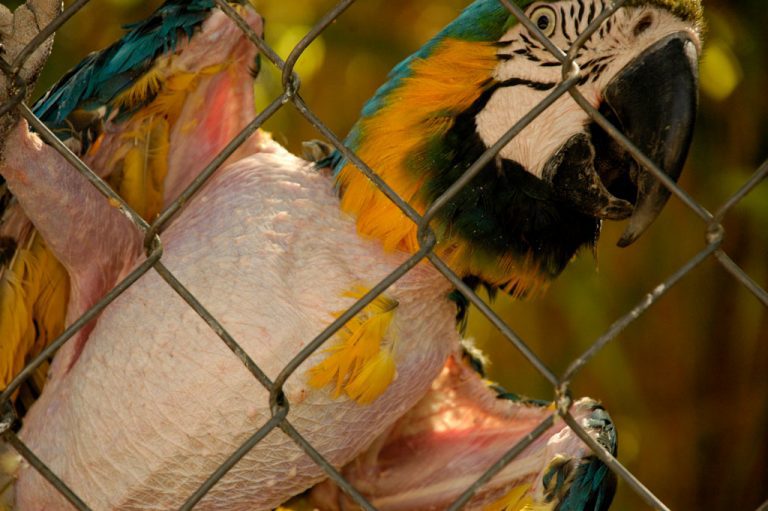
Before molting and in time, her parrots begin to take care of themselves more intensively. This is completely normal behavior and not cause for concern. Feather cleaning is safe, as it does not cause damage to the feather and skin.
Self-plucking is the actions of a bird that lead to disruption of feather growth, deterioration of its condition (chewing), or complete damage to the plumage and skin.
Almost all types of parrots and many birds that do not belong to the order of parrots are subject to self-plucking. But there are several types of parrots that most often suffer from this serious disease.
We list the parrots, starting with the species most susceptible to the syndrome: gray african parrot (jaco), cockatoo, alexandrian parrot, necklace, plum-headed, Ara parrot, eclectus (noble parrots), grey-cheeked parrots, lovers, monk parrots, fan and more
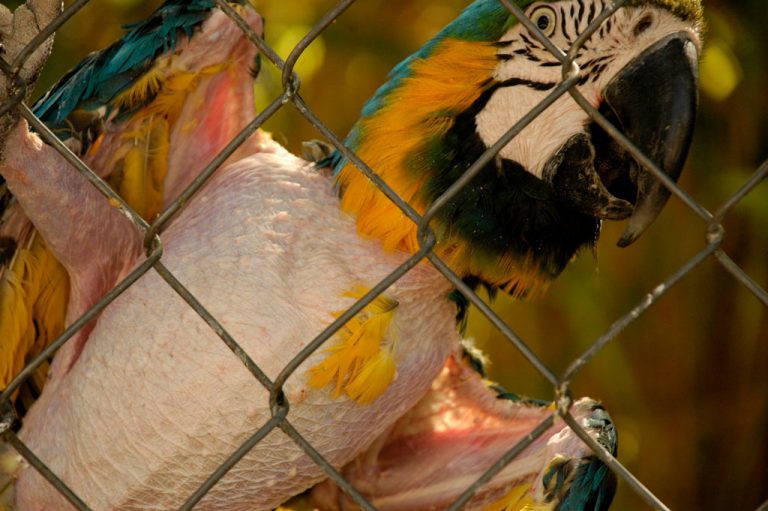
Amazons, parrots и cockatiels – birds that are less likely to suffer from self-plucking syndrome.
Contents
Diagnostics
If your parrot has begun to intensively clean and cut off plumage for no apparent reason, you should take tests as soon as possible and sketch out your pet’s living conditions on a piece of paper for a quick and accurate diagnosis.
Indicate the beginning of the manifestation of the syndrome, the changes that have occurred in the life of the bird or in the environment surrounding it, what kind of diet and appetite does the parrot have, what kind of relationship does the bird have with all family members (up to pets).
Note the time when self-plucking takes on the brightest form (time of day, weather), whether the bird was treated (from what and with what), how the parrot got to you, from where, at what age.
Analyzes to be carried out: litter analysis, blood chemistry, virus testing, skin scraping, fluoroscopy, common allergen susceptibility testing, hematology, feather pouch and skin biopsy, skin and feather pulp cytology, bacterial and fungal cultures.
The behavior of parrots prone to self-plucking: aggression, bites, shied away and hides, trembles when you approach the cage, obsessively cares for a person very capable of imitating speech.
Reasons for self-plucking
Many ornithologists tend to believe that self-plucking is caused by natural causes. This refers to the ecological features of the habitat and the individual social characteristics of each species.
We are talking about the lifestyle of a parrot in the wild. Certain species choose a partner for life, others have grown in a huge flock.
Parrots need long flights in search of food and water, some species feed on the ground, these birds spend most of their time running in thick grass, flying over bushes.
Unfortunately, a lot of birds become victims of smugglers. After the deafening stress caused by catching and transportation, birds often live in terrible conditions. And later, once in the house of a loving owner, the health of a parrot does not always withstand such changes.
In captivity, a different way of life is imposed on birds, which is completely contrary to their natural needs, and no toys or treats can replace a partner who has remained at home.
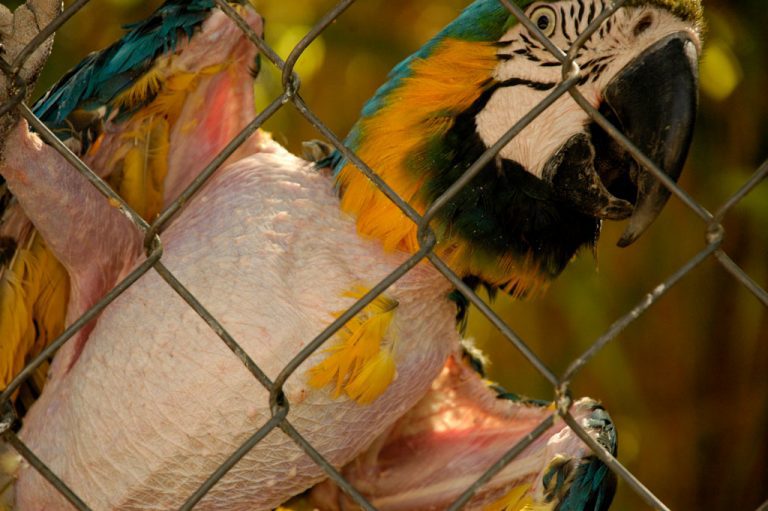
The parrot’s immunity decreases and previously hidden diseases become chronic, the bird’s health worsens, her illness bothers her, and the feathered one begins to scratch the diseased area of uXNUMXbuXNUMXbthe body, trying to relieve pain.
The nervous state of the bird is also in a precarious position – the body endures a colossal load. Therefore, often the syndrome of self-plucking can be the result of a long-term serious illness.
These reasons are more related to “savages”, with fosterlings from the nursery the situation is often different: pathological attachment to a person, the need for round-the-clock communication, hormonal imbalance, etc.
Possible diseases of a parrot, based on its behavior:
- if a parrot, plucking itself, damages the skin: lack of amino acids, vitamin, prebiotics, poor nutrition, toxins, the presence of external irritants;
- plucking of lower body plumage: internal parasites (giardia), poor nutrition, neoplasia, infectious diseases (polyoma virus, circovirus, PBFD);
- also, self-plucking in parrots occurs in the presence of external parasites, a malfunction of the endocrine system, primary infectious dermatitis or folliculitis, and allergies.
Very often the main cause of this disease is boredom:
- In the wild, parrots face a daily struggle for survival. Birds spend most of their time looking for food, which is associated with danger and possible adverse weather conditions.
In captivity, birds are deprived of all this: food is in the feeder around the clock, water is right there, you don’t need to fly a hundred kilometers to the river, there are no threats from predators.
- the lack of communication exacerbates the situation. Parrots are social birds, in flocks they constantly communicate with each other, left alone with a person, the bird is completely dependent on him.
In this case, the owner becomes the only source for at least some transfer and exchange of information. Not all parrots adapt to life alone.
Emotional stress – also a serious reason for the occurrence of self-pinching. Constant changes in the environment, terrible attitude, psychological and physical fatigue.
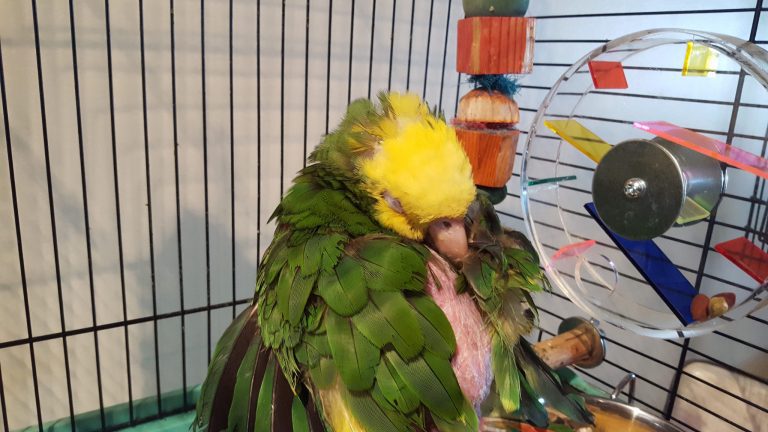
For the health of birds, the duration of daylight hours is extremely important, when we cover the cage with a blanket, making the “night”, and at the same time we continue to do our business, the bird is in tension, she is not up to sleep.
After dark in the wild, birds sleep, but the slightest rustle or noise signals the possible presence of a predator. Being under the covers during active time for people, the bird is exhausted and suffers from a chronic lack of sleep.
For clarity, only one example of stress is given, in reality, unfortunately, there are many more of them.
Hormonal causes – During puberty, parrots begin to subconsciously look for a partner. Mismatched mates, the presence of other birds, interference with the breeding season, loss of a mate can all lead to self-plucking.
And again, relationships with a person – a bird in the face of its owner can see a partner and, as a result, a storm of emotions (jealousy, resentment, joy) that she experiences while watching her “soul mate” destroys the bird’s nervous system and affects hormonal processes in reproductive period.
Imitation – A parrot can adopt the habit of self-plucking while in the company of a bird suffering from a similar syndrome, but for a different reason.
Treatment
Although the treatment is tailored to each case of self-plucking individually, we will list the main techniques used by ornithologists to maximize the restoration of a parrot’s health.
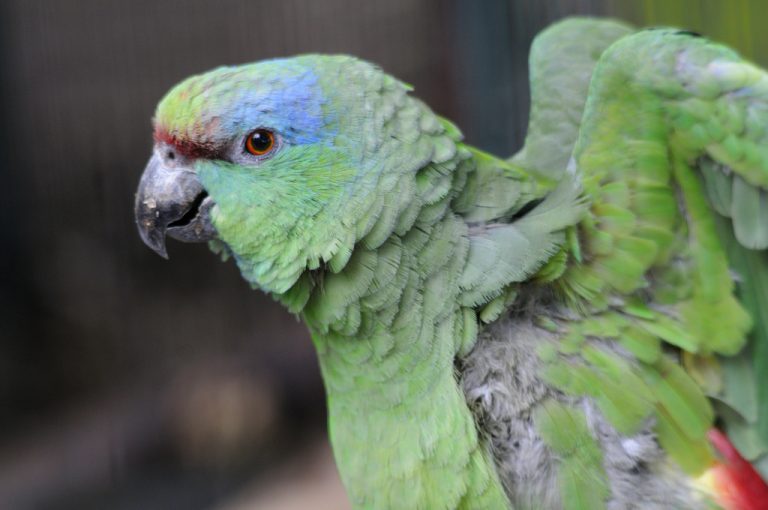
Treatment for pinching syndrome is difficult, takes a long time and depends entirely on your patience and attitude:
- diagnostics;
- drug treatment;
- drawing up a new menu for a parrot, which may include supporting vitamin supplements;
- creating optimal conditions for your species of parrot. The bird should feel safe and comfortable: air temperature, humidity, lighting, the ability to fly (depending on the chronicle of the disease);
- educational games, puzzles. Interest the pet, make him fully concentrate on getting a nut from the forager or on something else that will help captivate the bird;
- communication with the bird, encouraging its actions with treats, preventing the parrot from plucking itself.
Parrot self-plucking syndrome can be cured, although a lot of effort will be required. But the desire to help your pet and your decisive actions can turn a sick bird into a healthy and happy parrot with beautiful plumage.



